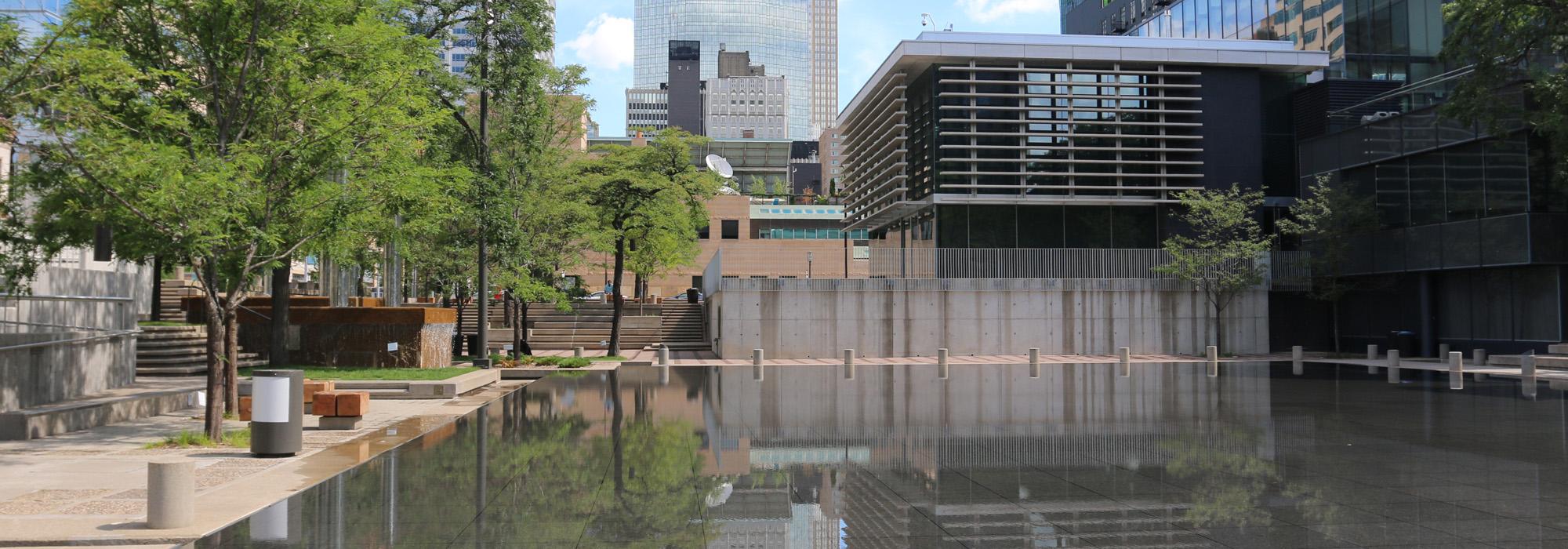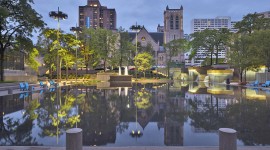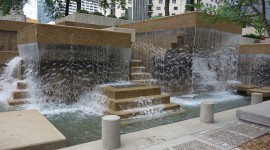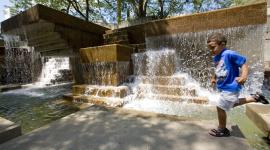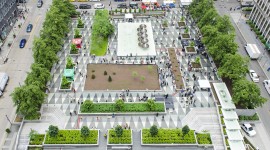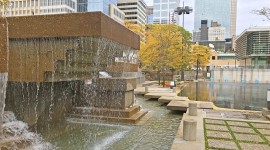Peavey Plaza: A Year after the Ribbon-Cutting
The first anniversary of the official opening of the renovated Peavey Plaza quietly passed on July 21, like many other significant events during the pandemic, but the state historic process continues. While plans for updating the plaza generally conformed to the Secretary of the Interior’s Standards for Rehabilitation, some changes that were necessary to improve accessibility and safety—particularly raising the level of the lower pool—adversely affected the plaza’s historic character. To compensate for this adverse impact, the city agreed to several mitigation measures after lengthy consultation with the Minnesota State Historic Preservation Office (SHPO) and members of the public including Preservation Alliance of Minnesota (PAM; now known as Rethos) and The Cultural Landscape Foundation (TCLF), collaborators in the lawsuit that stopped the city from demolishing Paul Friedberg’s seminal National Register-designated design.
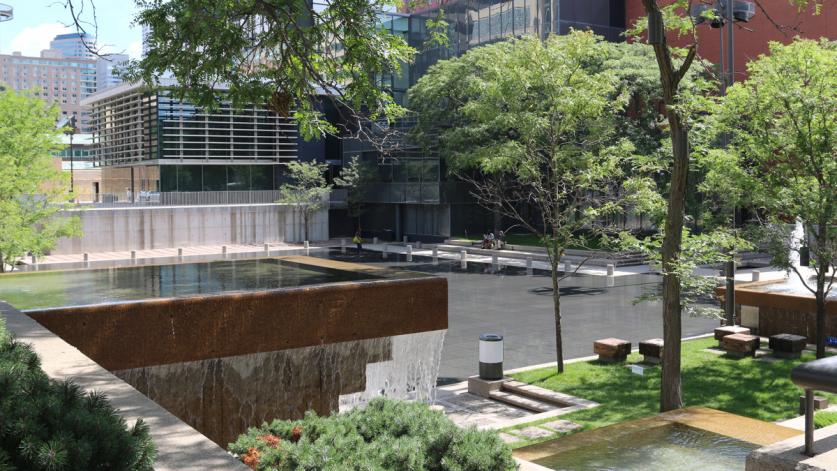
Before construction began, the city retained a professional photographer to take large-format archival photographs of the plaza meeting the specifications of the Historic American Landscapes Survey (HALS). Established in 2000 by the National Park Service, American Society of Landscape Architects (ASLA), and the Library of Congress, the HALS program records historic American landscapes with measured drawings, narrative histories, and large-format photographs. Volunteers from the Minnesota Chapter of the ASLA had documented Peavey Plaza in 2006 with nine measured drawings, a written description, and a historical overview. That documentation set, HALS No. MN-2, is now housed in the Library of Congress. The submittal did not, though, have photographs that met HALS standards. The photographs commissioned by the city in 2018 filled that gap and were accompanied by other materials related to the 2018–2019 renovation including as-built record drawings by Coen+Partners and a written narrative of the project’s scope. One set of these materials has recently been submitted to the Library of Congress to supplement the HALS report on file there; the other set will join the collections of the Minnesota Historical Society.
The city also agreed to develop and implement a plan for public interpretation. A draft of the plan was distributed in fall 2019 with the final version completed in June 2020. The stated aim of the interpretation is to “enhance the sense of welcome by giving the site context/meaning.” Illustrated panels and a tactile bronze model will highlight the significance of Peavey’s design and the plaza’s impact on the city’s history. The three-dimensional model will show the plaza’s historical form, using raised letters, Braille, and icons to identify key locations. The plan was developed with public input and has been reviewed by the SHPO, which approved of its content but raised concerns about mounting the aluminum-framed panels and bronze model on the plaza’s historic concrete. Once those issues are resolved, the city will fabricate and install the interpretive elements.
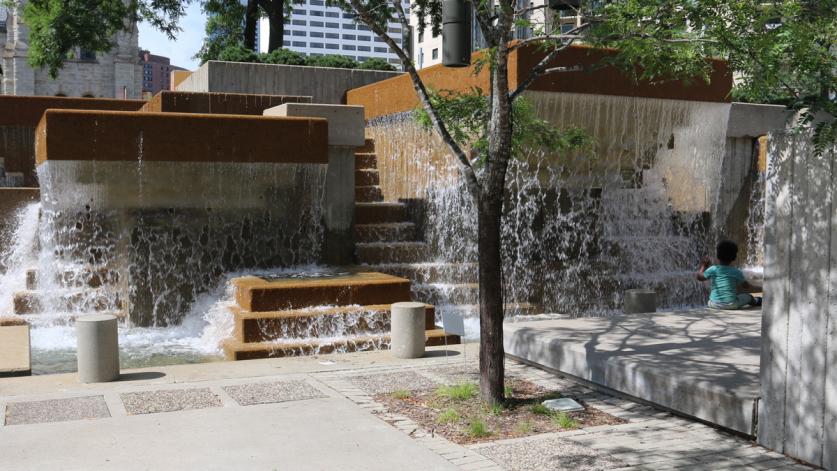
The substantial effort to rehabilitate Peavey Plaza does not ensure its long-term preservation, so another mitigation measure is a new operations and maintenance manual tailormade for Peavey. Prepared for the city by Coen+Partners, the manual provides preservation priorities, recommendations, and best practices for activities ranging from removing snow to installing signage. Treatments are provided for both historic and new materials including concrete, wood, and metals. The SHPO reviewed a draft of the manual and recommended clarifications and revisions, which are in the process of being addressed. The HALS documentation, interpretive plan, operations and maintenance manual, and SHPO correspondence are available here.
As part of the consultation process, the city’s Department of Public Works provided updates during construction to the SHPO and the public. At the urging of the SHPO, TCLF, PAM, and the Minneapolis Heritage Preservation Commission (HPC), it also convened a meeting with staff from Minneapolis’s Community Planning and Economic Development Department (CPED) in 2018 to discuss the possibility of designating Peavey Plaza as a local historic landmark. The property was listed in the National Register of Historic Places in 2013 and meets the criteria for local designation. In 2012, the HPC had reviewed the city’s earlier proposal for the plaza, which would have demolished Friedberg’s design, and denied a “certificate of appropriateness.” The city council overturned that decision, and it took the lawsuit by TCLF and PAM to halt the earlier plan from proceeding. Discussions about local designation in 2018 failed to gain momentum because of anticipated opposition from the city council.
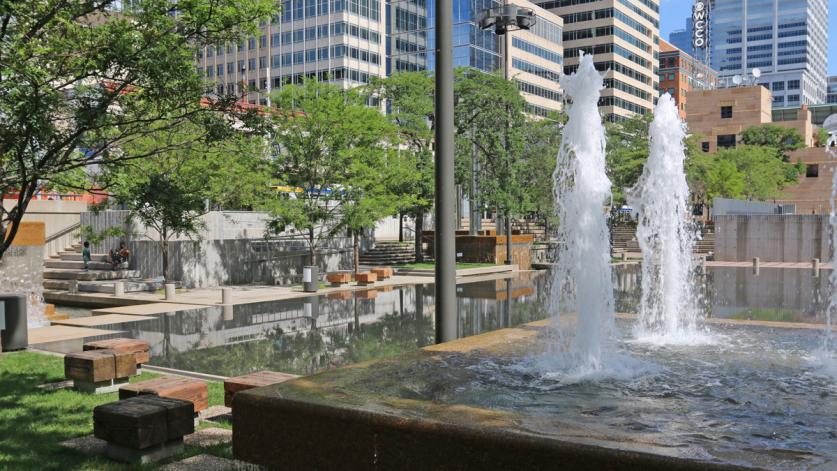
The plaza is being maintained and programmed by Green Minneapolis, a not-for-profit conservancy dedicated to advancing the vibrancy of downtown Minneapolis through parks and greening. After a delay due to the pandemic, Green Minneapolis turned on the fountains on July 2 and is welcoming visitors to “come by to dip your toes and get your daily dose of fresh air.” Its website notes that “parks and green spaces support mental health and relieve stress. Open public spaces allow us to create social and community connections while maintaining physical distance.”
With Peavey Plaza now being recognized locally and nationally for its innovative and creative approach to a challenging Modernist landscape, and the capstone aspect of the project – public interpretation being finalized for fabrication, why not have the epilogue adopt this last critical stewardship dimension – support for local designation?



